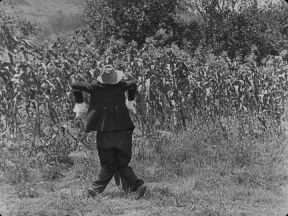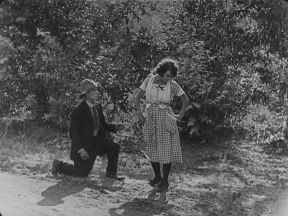The Scarecrow by Architha
The Scarecrow
The Scarecrow is a 1920 silent American comedy short film starring Buster Keaton. This 19-minute film was written and directed by Buster Keaton and Edward Cline.
Plot
Keaton and his roommate Roberts are farmhands who are competing for the love of the farmer’s daughter. The film opens with Keaton experiencing a toothache and his Roberts helping him pull the tooth out by tying it to the door. They both then get ready for breakfast. While Keaton cooks, Roberts sets the table, transforming their one-room living room into a kitchen by lowering strings from the ceiling that hold everything they need to eat. After their meal, they both go out to the farm where they compete for the farmer’s daughter’s attention.
Keaton then begins to be chased by a dog that he believes to be rabid. The chase concludes with Keaton losing his clothes at the mill and the dog asking to be friends. Keaton runs into the farmer who, now angry, begins to chase him. In an effort to go unnoticed and escape, Keaton trades places with a scarecrow, wearing its clothes and imitating its posture. Unfortunately, Keaton is found out and once again runs. He trips and while kneeling to tie his shoelace, the farmer’s daughter runs into him. Believing that Keaton is proposing to her, she accepts, and the two run away together after the accidental proposal and marry in a river at the end of the film.
Cast
- Buster Keaton as Farmhand #1
- Joe Roberts as Farmhand #2
- Luke the Dog as The “Mad” Dog
- Joe Keaton as the Farmer
- Sybil Seely as the Farmer’s Daughter
- Al St. John as Motorcyclist
Production
The film was made as part of Buster Keaton's deal with Metro Pictures to release eight short films a year. The Scarecrow was shot in only four weeks[1] and was followed immediately by production of the fourth short film Back Yard.
To exemplify a domestic setting, Keaton based the one-room house in the film off of Ed Gray’s house in Bluffton.[2]

